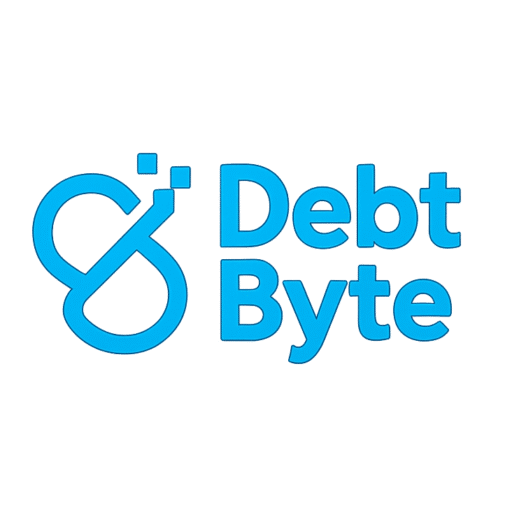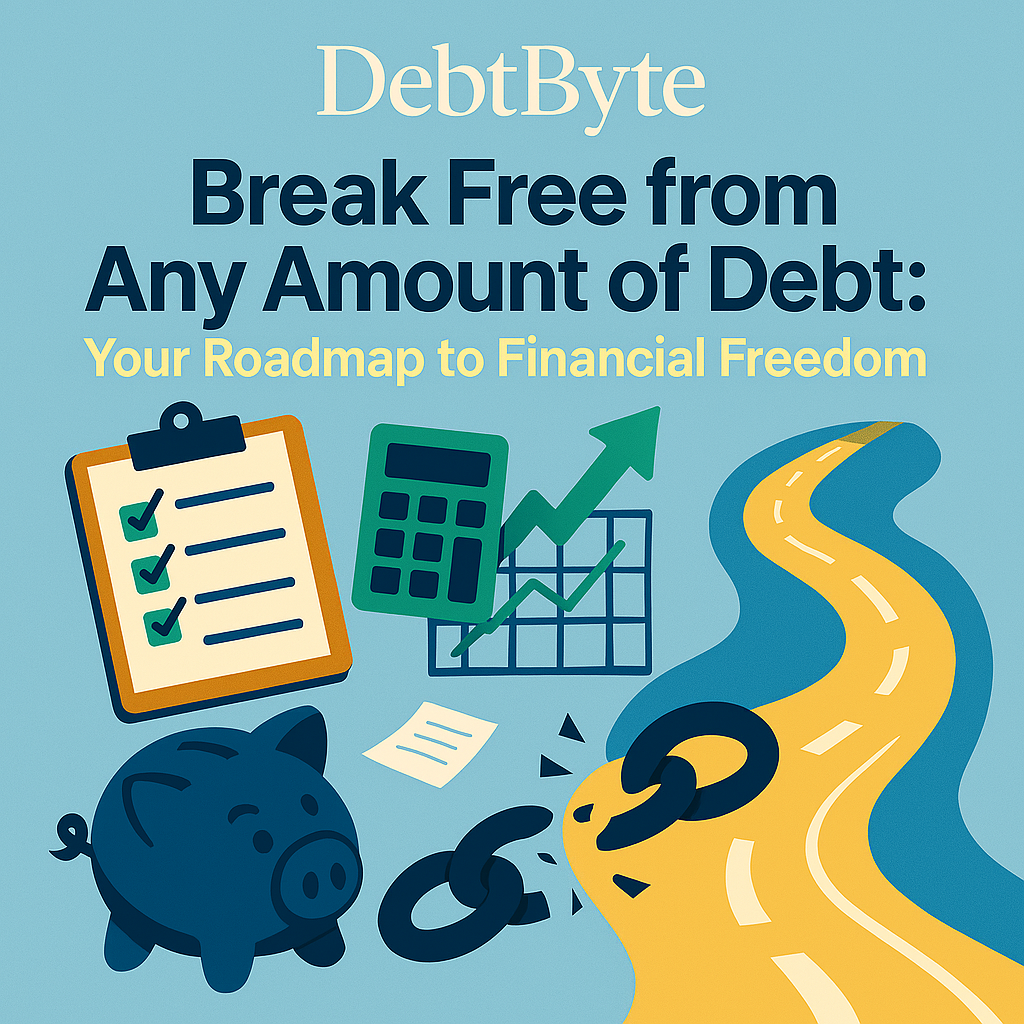Debt, in any amount, can feel like a heavy chain holding you back from living your best life. Whether it’s a credit card balance, student loans, or a personal loan, the key is to take control of your financial future now. This comprehensive guide details practical strategies, actionable steps, and mindset shifts to help you break free from debt—one dollar at a time.
Get a Clear Picture of Your Debt
Before you can begin to eradicate debt, you must know exactly what you owe.
- List Every Obligation: Start by making an inventory of all your debts. Include credit cards, student loans, car loans, medical bills, personal loans—any outstanding amount.
- Detail the Key Elements: For each debt, note the creditor’s name, the current balance, the interest rate, and the minimum monthly payment. This will help you determine which debts are costing you the most.
- Assess the Impact: Calculate your total monthly debt payments and understand how much interest you’re paying over time. A clear understanding of your debt landscape can be a powerful motivator.
Action Step: Create a “Debt Inventory” using a spreadsheet or a free budgeting app. By consolidating and visualizing your debt, you lay the foundation for a targeted repayment plan.
Develop a Strategic Debt Repayment Plan
Once you have a full picture of your financial obligations, it’s time to decide how to tackle them head-on. Two proven methods can help you do this:
The Debt Snowball Method
- Focus on Small Victories: Identify the smallest balance among your debts and start paying it off first, while maintaining minimum payments on the larger balances. The satisfaction of a quick win significantly boosts morale.
- Build Momentum: When you eliminate one debt, roll over the payment you were making into the next smallest balance. This creates a “snowball” effect, accelerating your progress as the amounts grow.
- Emotional Rewards: The frequent wins help reinforce positive behavior and encourage you to stick with your plan.
The Debt Avalanche Method
- Prioritize Costly Debt: Instead of starting with the smallest debt, target the debt with the highest interest rate. By doing so, you’ll reduce the overall amount of interest you pay over time.
- Long-Term Savings: This method might feel slower initially if the balances are large, but it is more cost-effective in the long run.
- Numbers-Driven Choice: If you are motivated by a logical, mathematical approach, the avalanche method might be best for you.
Action Step: Evaluate your personality and financial situation. Decide which method aligns with your personal motivation—whether the quick wins of the snowball method or the long-term savings of the avalanche method (or even a blend of both). Commit to one strategy and adjust as your situation evolves.
Revise Your Budget to Accelerate Debt Repayment
A realistic and flexible budget is essential to freeing up extra cash for debt repayment.
- Document Your Entire Income and Expenses: Track all income sources and list every monthly expense, from essential costs like rent, utilities, and groceries to discretionary spending like dining out and entertainment.
- Identify Opportunities for Savings: Scrutinize your expenses to identify non-essentials that can be reduced or eliminated. Eliminating a few recurring costs—think unused subscriptions or frequent takeout—can free up money to pay down your debt.
- Reallocate Funds: Redirect these savings to your higher-priority debts. When you deliberately shift your spending, you’re making a tangible statement of commitment to your financial future.
Action Step: Use a budgeting app such as Mint or EveryDollar, or simply create a detailed spreadsheet. Regularly review and adjust your budget to reflect any changes in income or unexpected expenses, ensuring that you consistently chip away at your debt.
Increase Your Income
Sometimes, cutting expenses isn’t enough. Boosting your income can significantly accelerate your debt payoff.
- Explore Side Hustles: Whether it’s freelancing, tutoring, selling handmade crafts, or driving for a ride-sharing service, extra work can supplement your income.
- Negotiate at Work: If you’re in a job that offers upward mobility, consider negotiating for a raise or additional hours. Every extra dollar earned can hasten your journey out of debt.
- Monetize Your Skills: Look for ways to turn your hobbies or talents into additional revenue streams. This might include anything from graphic design to offering virtual assistant services.
Action Step: Identify one or two realistic opportunities to increase your monthly income. Even modest additional earnings, when applied directly to debt, can make a noticeable difference over time.
Cultivate a Resilient, Debt-Free Mindset
Tackling debt is as much a mental challenge as it is a financial one. Building the right mindset is crucial to staying on track.
- Celebrate Milestones: Recognize and celebrate every achievement, no matter how small. Each balance paid off is a victory that moves you closer to freedom.
- Educate Yourself Continually: Delve into personal finance books, podcasts, and online communities. The more informed you are, the better you’ll be equipped to handle financial challenges.
- Practice Mindful Spending: Understand your triggers for impulsive purchases and develop strategies to manage them. This might mean waiting 24 hours before making non-essential purchases or setting clear spending priorities.
Action Step: Develop a system of non-monetary rewards that acknowledge your progress. Whether it’s a day out, a quality time activity with friends, or simply acknowledging your efforts, find ways to stay motivated without derailing your budget.
Monitor Your Progress and Stay Flexible
Financial circumstances change—what’s important is how you adapt.
- Conduct Regular Reviews: Set a recurring time each month to revisit your debt plan and budget. Are you meeting your milestones? Are there areas requiring adjustment or unexpected expenses to plan for?
- Visualize Your Journey: Use charts, graphs, or debt-tracking apps that showcase your progress in real time. Visual evidence of your shrinking debt can provide immense motivation.
- Embrace Flexibility: Life is unpredictable. Whether your income fluctuates or new expenses arise, be ready to adjust your strategy without feeling like a setback. Flexibility ensures that you remain on course for long-term success.
Action Step: Commit to a monthly “money review” session where you update your debt inventory, analyze your progress, and modify your plan as needed. This periodic checking-in will help maintain your focus and adapt to life’s shifts.
Final Thoughts: Your Journey to Financial Freedom
Breaking free from any amount of debt is not an overnight miracle—it’s a journey that requires determination, clarity, and persistence. Every dollar paid reduces your burden and brings you closer to a future where your money works for you, not against you. By understanding your debt, choosing a strategic repayment plan, revising your budget, increasing your income, nurturing a resilient mindset, and consistently tracking your progress, you’re laying down the stepping stones to financial freedom.
At DebtByte, we believe that resetting your money means resetting your life. Start today, commit to your roadmap, and each strategic decision you make will empower you to reclaim your financial future. Remember, every step, every payment, and every small win counts.
Have questions, or want to share your progress? Drop a comment below and join a community of like-minded individuals committed to turning debt into a distant memory, paving the way for a brighter, debt-free future.


Leave a Reply